The best time to visit Sapa is from September to May of the following year when temperatures range from 5 to 33°C. Sapa sits at the base of the majestic Hoang Lien Son Mountain range and offers a variety of natural splendors in all four seasons: spring, summer, fall, and winter.
Sapa, voted a beautiful tourist attraction by Business Insider India, boasts its cool atmosphere and stunning landscapes year-round. In this article, we’ll reveal the weather conditions and travel tips for each season in Sapa.
Sapa in the Spring (February to May)
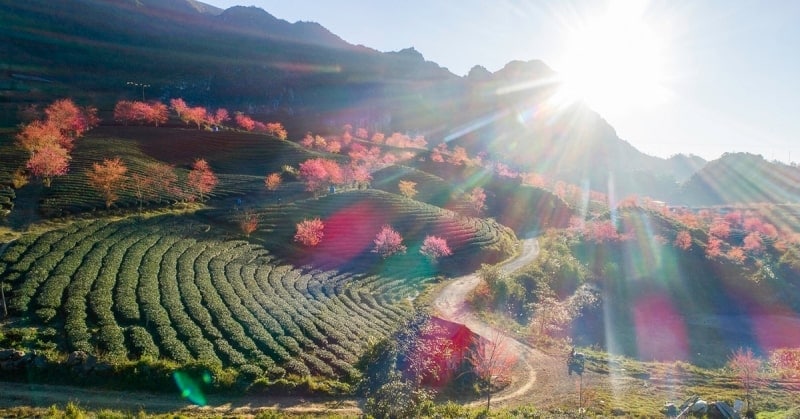
Sapa in the spring offers favorable weather, with temperatures from 12 to 28°C and humidity around 80%. Spring is the best time to travel to Sapa; you can expect sunny and cloudy days with refreshing breezes. Sometimes, it’s rainy in some areas, and the air in the early morning and night is cold.
What to Do

Spring in Sapa is the season of flowers and festivals. February to May are the best months to visit Sapa when beautiful flowers flourish with glowing colors. White plum blossoms and pink peach blossoms cover this Northwest mountain area, creating charming scenery in the majestic mountains. It’ll be a perfect experience to watch flowers in cold weather and shoot great photos as film scenes.
Moreover, during spring, numerous captivating festivals hosted by ethnic minorities such as the Mong, Dao, and Giay take place. You can socialize with their culture, witness the fun dances, and wear embroidered traditional clothes to welcome a lucky and happy new year. Ethnic villages like Cat Cat, Ta Van, or Ta Phin are the best places to visit in Sapa for festivals.
With the pleasant spring weather, it’s a great time to conquer the Fansipan mountain (the roof of Indochina) and indulge in the stunning cloud skies. Moreover, take a chance to visit O Quy Ho Pass (known as the King of Passes in Vietnam), and you’ll be mesmerized by its breathtaking views.
Travel Tips
Sapa is in the Northwest mountainous area, so its weather is cool around the year and cold in the early morning and night. Remember to prepare warm clothing and a few comfortable clothes for outdoor activities. Especially in the first months of spring, the weather is quite cold, with temperatures around 10 – 12 °C; gloves and scarves are also necessary for your trip.
The favorable weather and captivating festivals attract local and international travelers to Sapa in the spring. Tourist services like hotels, transportation, and tour packages are in their peak season (especially in February). So, booking your trip to Sapa in the spring at least three months in advance is recommended for the best options.
Sapa in the Summer (June to August)
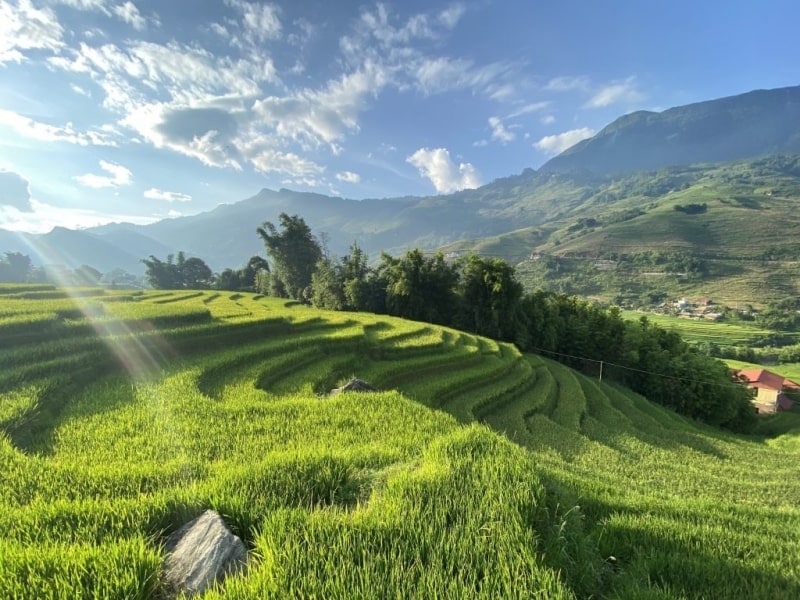
Sapa in the summer has cloudy and sunny days, but it experiences thundery rains in the evenings and nights. The temperature ranges from 12 to 37°C, and the humidity is around 65 to 98%.
What to Do
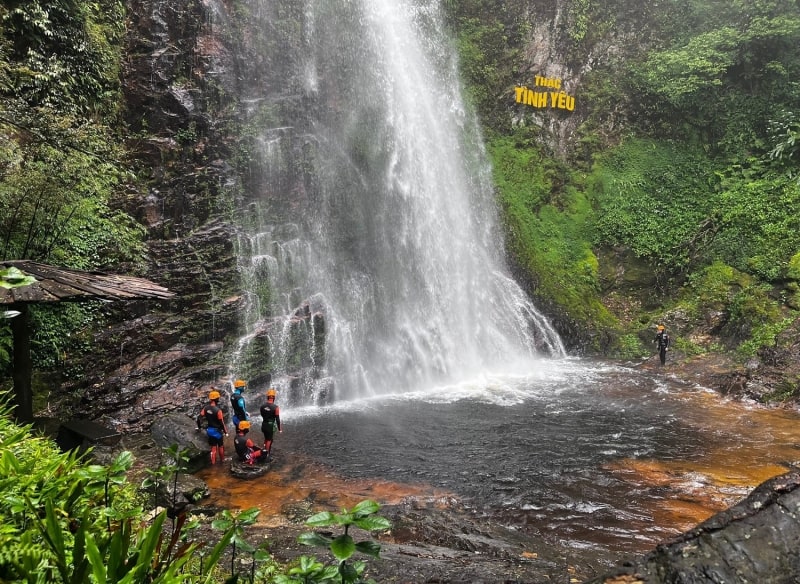
Summer from June to August allures Indian tourists to Sapa to escape the heat, take in the lush terraced fields, and admire majestic waterfalls.
In the summer, Sapa is blanketed by the green of growing rice fields. The terraced field in Sapa is one of the most spectacular in the world, which is compared to the stairway to heaven. Ta Phin, Cat Cat, and Ta Van villages offer the best views of lush terraced fields.
Rainfall is high in the summer, making it ideal to witness the powerful waterfalls in Sapa. Silver Waterfall and Love Waterfall are significant tourist attractions. In addition, if you travel to Sapa in the summer, you’ll have the opportunity to taste fresh local fruits such as plums and peaches.
Summer is a beautiful season to visit Sapa, but it can occasionally face extreme weather, such as floods and landslides. So, you should book the tour package, consult with local tour guides, and follow the forecast news for your trip.
Travel Tips
Summer is a blend of warm and cold with sudden rains, so it’s advised to wear quick-drying clothes and bring a light raincoat or a compact umbrella. Besides, warm clothes are a must-have item when visiting this mountainous area. Sunscreen, hats, and anti-mosquito sprays are also necessary in the summer.
Additionally, summer is the height of tourism, particularly in June and July, coinciding with the vacation time of Vietnamese families. You should contact tourist agencies as soon as possible to get the best tour packages at affordable rates.
Sapa in the Fall (September to November)
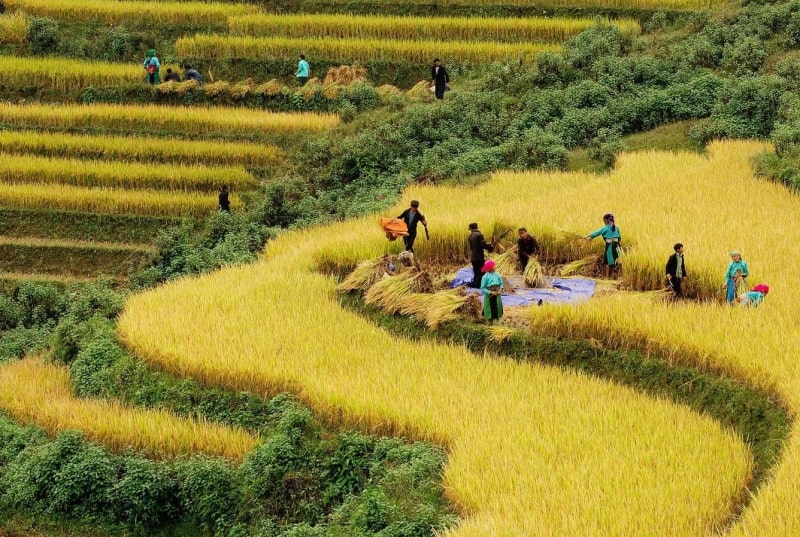
Fall is one of the best times to visit Sapa. The weather in the fall is pleasant and cool, making it ideal for outdoor activities. The temperature varies from 22 to 33°C, and the humidity is around 75%. Days are cloudy and sunny, while early mornings and nights can be chilly.
What to Do
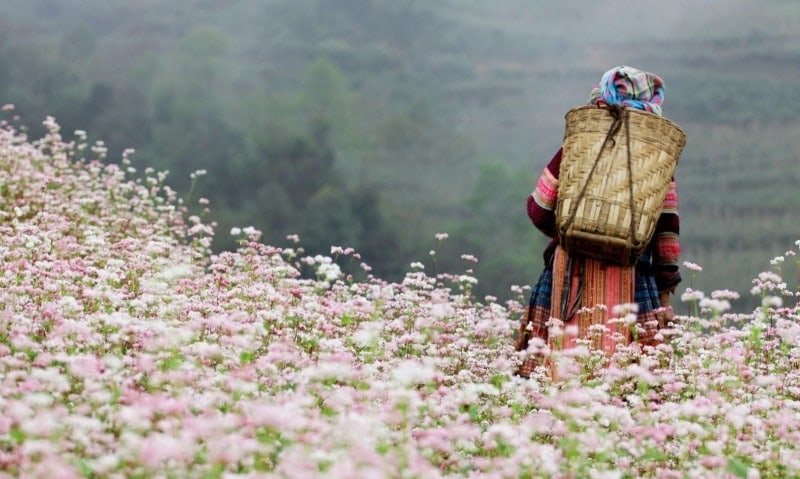
Fall in Sapa lasts from September to November and is highlighted by charming yellow terraced fields and gorgeous buckwheat flowers.
Renowned for having the most beautiful terraced fields in the world, Sapa attracts an influx of Indian tourists. September to late October is a harvest season and the best month to visit ethnic villages and admire the yellow covers of ripe rice paddies. After harvesting, these fields change into light purple buckwheat flowers in November.
Sapa in the fall boasts stunning natural scenery, so it’s an excellent choice to stand in high places to admire them. Fansipan and Ham Rong Mountain are the ideal destinations for panoramic views of Sapa.
Moreover, you can wander the markets and try local specialties such as salmon hot pot, grilled meat, and thắng cố (horse meat hot pot, a traditional dish of H’Mong ethnic people).
Travel Tips
With the cool climate in the fall, wearing comfortable clothes such as T-shirts, trousers, and light jackets is recommended. Make sure to pack some warm clothing too, as nights can get chilly. Hats, scarves, and socks are also important to keep warm.
Although fall isn’t the peak of tourism, many international travelers prefer to visit Sapa in this most beautiful season. So, booking the services soon is advised for the best options.
Sapa in the Winter (December to February)
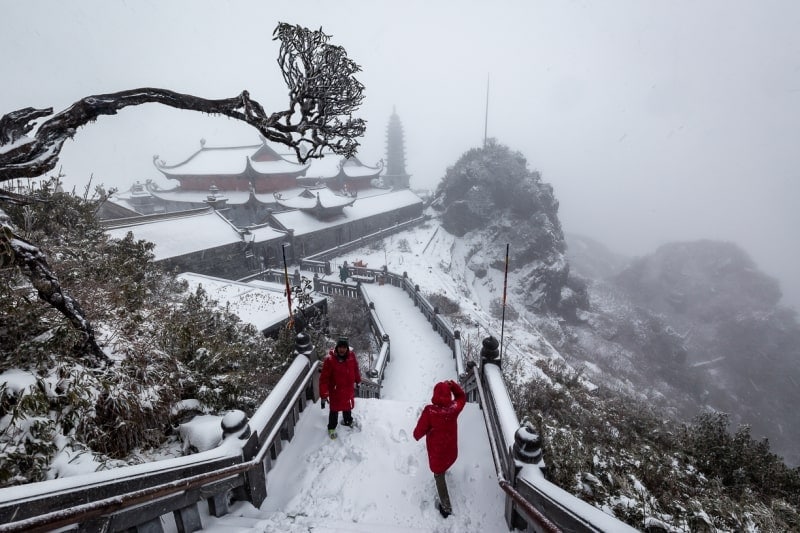
Sapa in the winter has low temperatures (around 5°C – 28°C) with a humidity of 80%. Days are cloudy and foggy, while rain can occur in certain areas at night. In winter, early morning and night are freezing; even there might be snow. Although this season is the coldest of the year, Sapa still attracts many Indian tourists due to spectacular landscapes such as fairyland.
What to Do
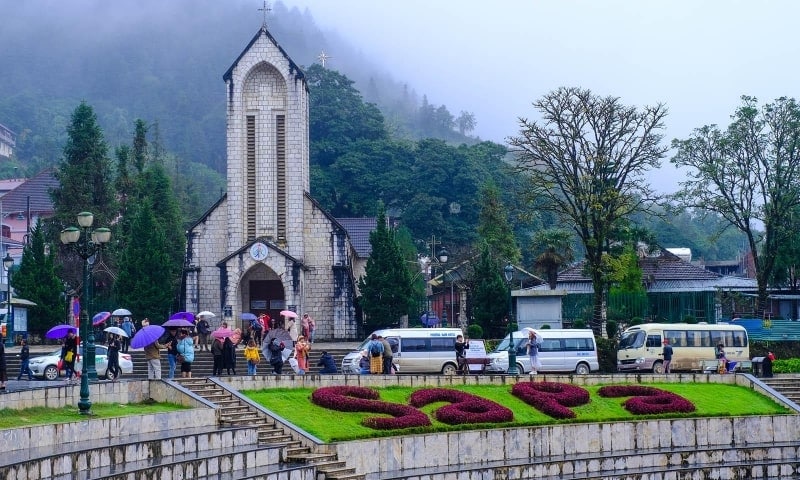
December to February is winter in Sapa. If you’re lucky to visit Sapa when it’s snowy, you can enjoy the picturesque natural views.
The best places to visit Sapa in winter are Fansipan Mountain or Ham Rong Mountain, where you can see landscapes at high altitudes.
With romantic scenes and exotic sculptures, Swing Sapa and Moana Sapa lure multiple tourists to visit and take great art photos.
Furthermore, it’ll be a memorable experience to celebrate Christmas at Stone Church in Sapa. The church becomes sparkling with colorful lights and lively with singing and prayer.
Travel Tips
Sapa in winter is freezing, so you should pack warm clothes like long-sleeved shirts, jeans, sweaters, and jackets. Moisturizers, hats, scarves, socks, and gloves are must-have items for your journey. Booking your Vietnam tour package soon is recommended to have the best priority, especially in January (the peak month of tourism).
Conclusion
Sapa’s charm varies in every season, but the best times to visit Sapa are spring, fall, and winter. Its cool climate and breathtaking landscapes make Sapa a must-see travel destination in Vietnam. Call us soon to receive the best advice for your trip to Sapa!
RELATED ARTICLES
ITINERARIES WITH SAPA

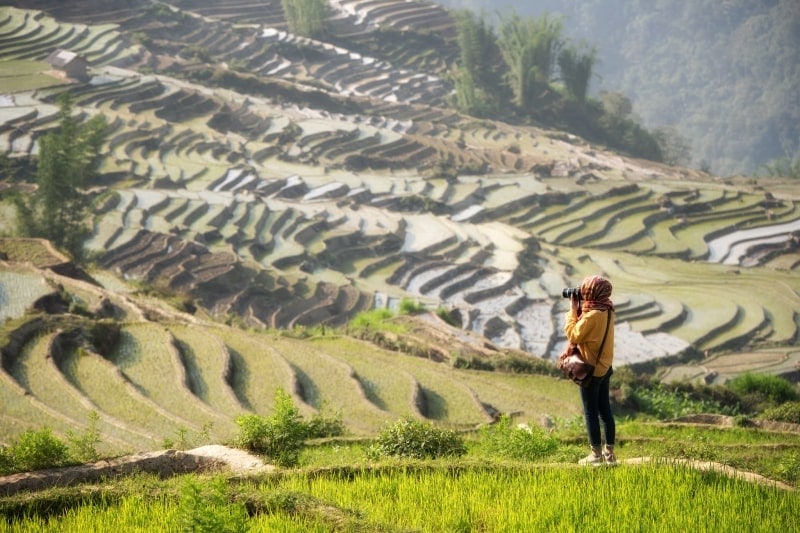

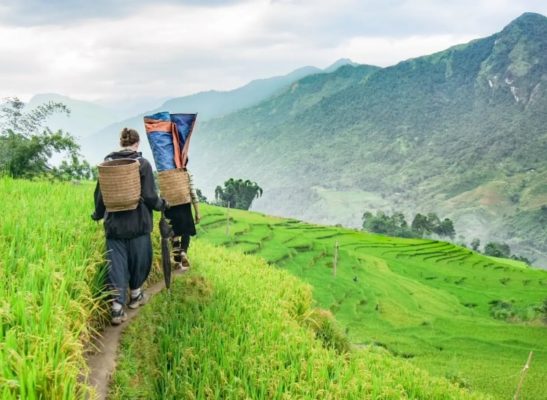
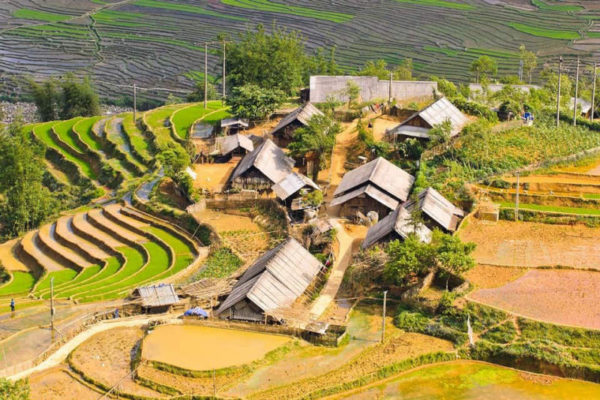
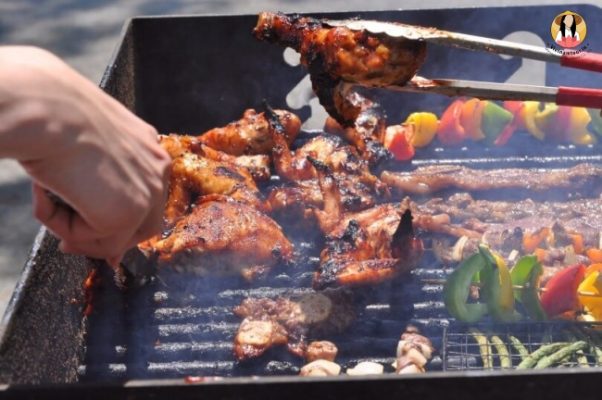
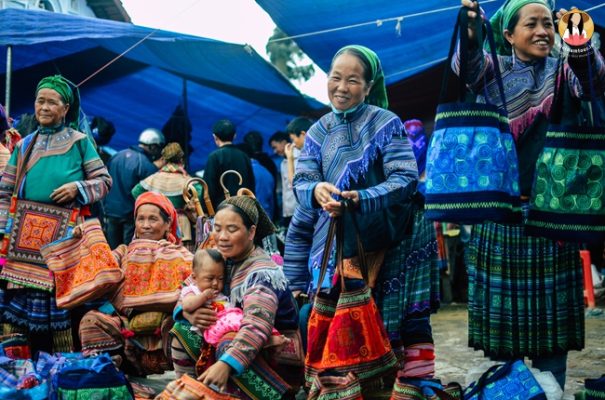
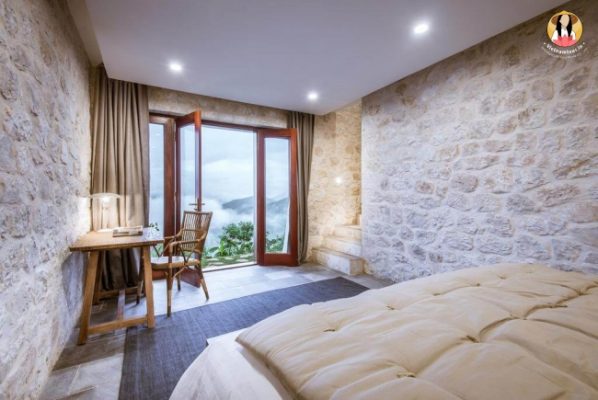
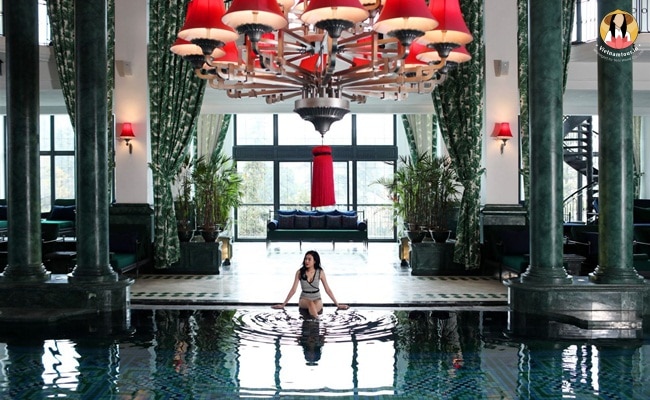
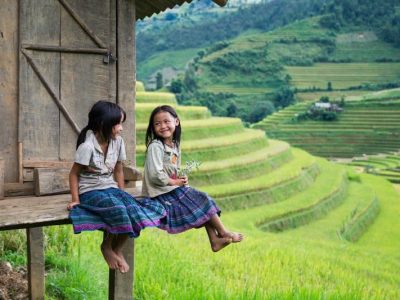
1 Countries 6 Cities
Vietnam Highlights Discovery
Departure City: Mumbai
Latest Departure Date: December 06 2025
15 seats left
Starting fromSave 35% ₹1,12,000
per person on twin sharing with airfares